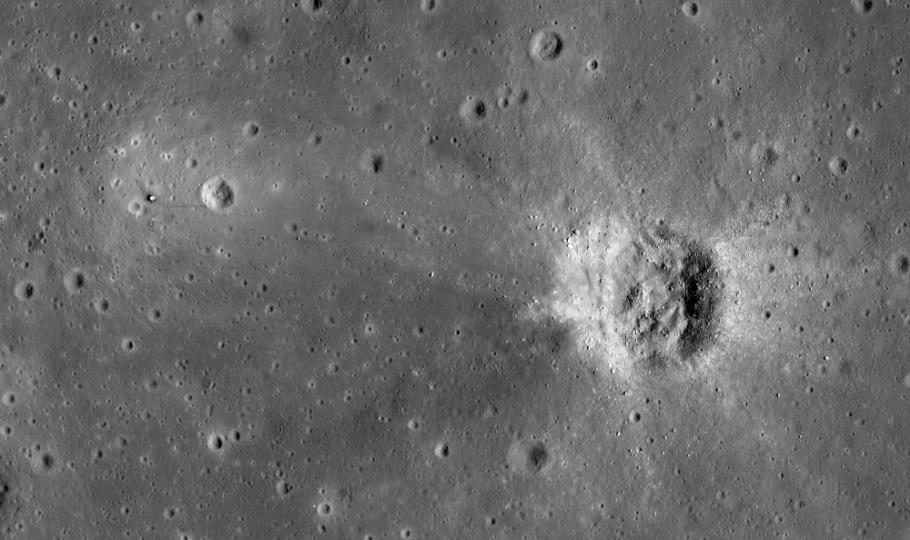Over half a century ago, on July 20, 1969, humans walked on the Moon for the first time.
We look back at the legacy of our first small steps on the Moon and look forward to the next giant leap.
Jump to a Section:
Mission People Technology On Earth How We Celebrated More Resources
The Mission
1962
"We choose to go to the Moon."
The Soviet Union launched the first human, Yuri Gagarin, into space on April 12, 1961. Within days of the Soviet achievement, President John F. Kennedy asked Vice President Lyndon Johnson to identify a “space program which promises dramatic results in which we could win.” A little over a month later, on May 25, 1961, Kennedy stood before a joint session of Congress and called for human exploration to the Moon.
Eight years later, a Saturn V rocket carrying the three Apollo 11 astronauts blasted off from Cape Kennedy. Over a million spectators, including Vice President Spiro Agnew and former President Lyndon Johnson, came to watch the lift off.
July 20, 1969
"The Eagle has landed!"
After four days traveling to the Moon, the Lunar Module Eagle, carrying Neil Armstrong and Buzz Aldrin landed on the Moon. Neil Armstrong exited the spacecraft and became the first human to walk on the moon. As an estimated 650 million people watched, Armstrong proclaimed "That's one small step for man, one giant leap for mankind."
Michael Collins stayed aboard the Command Module Columbia, serving as a communications link and photographing the lunar surface.
After approximately two and half hours on the Moon, Armstrong and Aldrin returned to the lunar module to begin the journey home. The three astronauts splashed down in Hawaii on July 24, 1969. From there they quarantined for three weeks as a precaution against bringing contagion back from the Moon, before the festivities welcoming them home commenced.
The Sea of Tranquility | Mare Tranquillitatis
00.67408° N latitude, 23.47297° E longitude
For the first lunar landing, the Sea of Tranquility (Mare Tranquilitatis) was the site chosen because it is a relatively smooth and level area. It does, however, have some craters and in the last minutes before landing, Neil Armstrong had to manually pilot the lunar module to avoid a sharp-rimmed ray crater measuring some 180 meters across and 30 meters deep known as West. The lunar module landed safely some 6 km from the originally intended landing site, approximately 400 meters west of West crater and 20km south-southwest of the crater Sabine D in the southwestern part of Mare Tranquilitatis. The lunar surface at the landing site consisted of fragmental debris ranging in size from fine particles to blocks about 0.8 meter wide.
Sea of Tranquility is where Apollo 11 astronauts landed on the Moon in 1969.
The People
Commander
Lunar Module Pilot
Command Module Pilot
Three astronauts were selected as backups for the crew: James A. Lovell, commander; William A. Anders, command module pilot; and Fred W. Haise, lunar module pilot.
All three backup crew members would eventually fly on Apollo missions. Lovell and Haise were among the crew for Apollo 13.
The Technology
Watching from Earth
In the Collection
Take a virtual tour of the Destination Moon exhibition! This exhibition features iconic objects from the Museum's unrivaled collection of Mercury, Gemini, and Apollo artifacts, including Alan Shepard's Mercury spacesuit and spacecraft, a Saturn V F-1 engine, and Neil Armstrong's Apollo 11 spacesuit and command module Columbia.

